If you are a gourmet, you should definitely try the dishes french cuisine. But first, find out which of them are the best and most sophisticated.
A bit of history
The history of French cuisine goes back to the 15th century. Then the first cookbooks began to appear. Dishes were prepared according to the traditions of the Moors, and even then the cuisine was refined and refined. To give an unusual taste, sugar was used (it was a real luxury at that time), and milk. To make the dishes fragrant, they were flavored with rose water.
And saffron helped to make the color of food more saturated. But in the 16th century, the preferences of the French changed due to the influence of Rome. Sweet dishes faded into the background, and salty and spicy ones came to the fore. It was at that time that culinary experts introduced the tradition of starting a meal with good wine, which stimulated digestion and improved appetite.
But the kitchen became what everyone knows it today thanks to Louis XIII. It was he who made the meal something solemn and sublime. Louis himself was very fond of food and could eat a dozen dishes at a time. The cooks at the court spent the whole day creating their masterpieces to please the king.
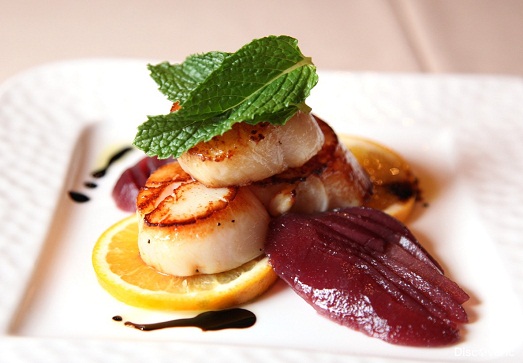
French cuisine is divided into several areas: common, refined and regional. The common cuisine is those dishes that almost all French people eat every day. Regional cuisine is the dishes of the regions, distinguished by their characteristics, such as the use of alcoholic beverages and hot spices. BUT gourmet cuisine These are true culinary masterpieces.
The main features of French cuisine
French cuisine, like any other, has its own characteristics. We list the main features:
- Abundance. Few people know, but many of the world famous sauces are French. Even the beloved mayonnaise comes from France. Any dish can be made unusual and refined by adding sauce.
- Alcoholic beverages, especially wines, are often used to prepare meals. But it evaporates, so that the alcohol is almost completely evaporated. And what remains gives the dishes a unique taste and aroma.
- The French are very fond of vegetables. And many traditional dishes prepared from vegetables.
- French cuisine is also characterized by an abundance meat dishes. In this case, almost all types of meat are used: lamb, veal, game. The French are often used to prepare poultry meat dishes. In addition, offal, such as liver, kidneys, and so on, are quite popular.
- Seafood and fish are also present on the tables of the French. Oysters are especially popular. It is noteworthy that red varieties of fish are scarce in France, but the chefs prepare simply chic dishes from ordinary river fish.
- Dairy products are rare. The only popular and sought after is cheese. In France, cheeses are loved and prepared with special trepidation. In addition, exquisite varieties with different types of noble mold are popular.
- Another hallmark of French cuisine is diversity. And puree soups are especially loved and popular.
- Particular attention is paid to the quality of products. Only the freshest selected and, of course, natural are used.
- The French are very fond of and constantly use olive oil.
- Desserts are exquisite, tasty and airy. These are all kinds of creams, fruit dishes, as well as airy buns.
- A French meal is a whole complex of several dishes consumed in a certain sequence. So, lunch begins with an aperitif. The Frenchman then eats the soup, then the appetizer, then the entree after the appetizer, then the main course, then the fried dish, then the light dish, then the dessert, and then the cheese and coffee. It is not clear how, with such hearty dinners, French women manage to stay slim.
The best dishes
We offer you the best French cuisine.

Ratatouille - vegetable light and very tasty dish, whose name literally translates as "mixed food." For cooking you will need:
- 2 eggplants;
- 2 zucchini (young);
- 8 tomatoes;
- 5 tablespoons of olive oil;
- 1 bell pepper;
- 1 onion;
- 1 clove of garlic;
- greenery;
- pepper and salt to taste.
Cooking method:
- First prepare the sauce. To do this, finely chop and fry the onion in olive oil.
- Peel and cut the bell pepper into small cubes, fry with onions for 5 minutes
- Take 4 tomatoes and chop them in a blender, add to the onion and pepper. Simmer everything until done, about 15 minutes, then salt, pepper and add herbs. Switch off the flame after 2-3 minutes.
- Now prepare the vegetables. Cut the zucchini, eggplant and tomatoes into rings. Rub the eggplants with salt and leave for 15 minutes, then wash and dry.
- Put on the bottom of the pan tomato paste, then vegetables. Place the vegetable rings so that they fit snugly against each other.
- Now chop the garlic and herbs, mix with pepper and the remaining olive oil. Put it all on top of the vegetables.
- Send the baking sheet to the oven, preheated to 180 degrees, for about an hour.
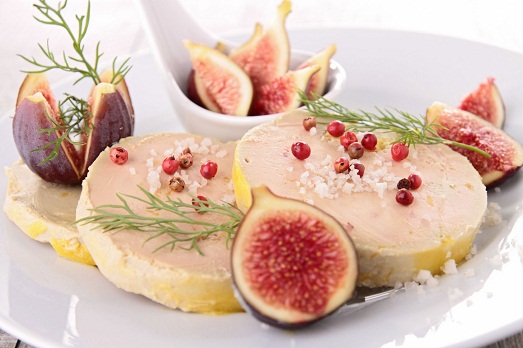
Foie gras is a goose liver dish (the name translates as "fatty liver"). Since ancient times, geese have been force-fed to make their livers fat. . The liver can be boiled, fried or baked. We offer you a recipe that involves frying. Here is the list of ingredients:
- 1 kilogram of goose liver (many replace it with duck);
- ½ white wine;
- salt and pepper to taste.
Cooking method:
- soak in cold water overnight.
- Cut the liver into pieces and fill with wine.
- After two hours, you can start frying. It is best to fry in olive oil, although the usual sunflower is also suitable.
- Serve the liver with sauce.
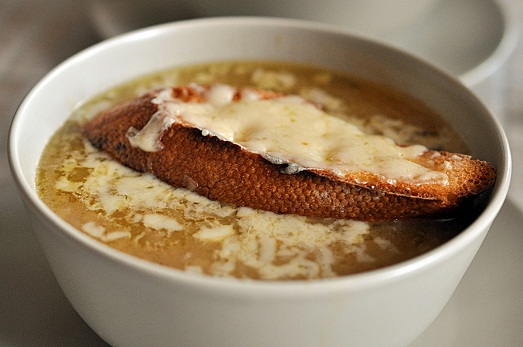
Onion soup is another unusual but delicious French dish. Here's what you need to prepare:
- 3 large onions;
- 1 liter of beef broth;
- 30 grams of butter;
- a few pieces of French loaf;
- 2 tablespoons of olive oil;
- 100 grams of cheese (better, of course, French);
- salt, pepper and herbs to taste.
Cooking method:
- The onion needs to be peeled and finely chopped.
- Melt the butter in a heavy bottomed saucepan. Reduce heat to low and add onions. Fry it until golden brown, and then cover the pan with a lid and simmer the onion for 15-20 minutes.
- Bring the broth to a boil in another saucepan, then add the fried onions.
- Fry the bread in olive oil.
- Pour the soup into bowls, place a piece of loaf in each, and then sprinkle everything with grated cheese.

In general, gratin is any dish baked in the oven that has an appetizing crust. Incredibly delicious potato gratin. Here's what you need to prepare:
- 1.5 kg of potatoes;
- 500 ml cream (not too fatty);
- 3 cloves of garlic;
- 150 grams of hard cheese;
- 20-30 grams of butter;
- a pinch of nutmeg;
- pepper and salt to taste.
Cooking method:
- Cut the potatoes into rings.
- Chop the garlic.
- Add the garlic, salt and pepper to the cream.
- Grease a baking dish with butter.
- Spread potatoes in layers, pour cream over each layer.
- Bake the gratin at 180 degrees for about 40 minutes.
- Grate the cheese on a coarse grater.
- Remove the baking dish and sprinkle the potatoes with grated cheese, and then bake the gratin for another 5-10 minutes.
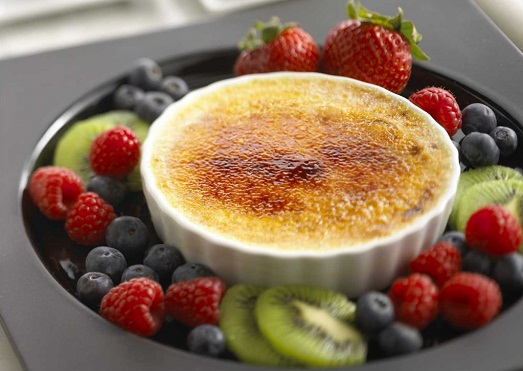
The name of this dessert literally translates as "burnt cream". You will need:
- 1 liter of cream;
- 180-200 grams of sugar;
- 8 egg yolks;
- 1 sachet of vanilla or 1 vanilla pod.
Cooking method:
- Mix the cream with half the sugar and bring to a boil, stirring constantly.
- Whisk the yolks with the remaining sugar.
- Continuing to beat the yolks, start pouring the cream.
- Pour the mass into the molds and immerse them in a baking sheet filled with water (it should not reach the edges of the molds a little).
- Cook the creme brulee in the oven for about 40 minutes (at 160 degrees).
Now you know the recipes and you can cook the best French dishes at home.
The traditional French lunch begins with cold or hot appetizers, then soup (for example, vegetable sauté), salad and vegetables, after which - the main course. A glass of wine, either red or white, is always served with the meal. Today, rosé wines are very popular.
National French cuisine is distinguished by a very wide use of root crops and vegetables. Very popular are vegetable salads that are rich in vitamins, artichoke, asparagus, lettuce (fresh and canned), leek. The main meat dishes are traditionally served with coleslaw and green salad.
French chefs in the kitchen use many different types of meat - beef, lamb, veal, game, poultry - and actively use heat treatment: stewing, frying, boiling. Meat is used in the preparation of various salads. A very original technique is flaming (arson) of food. Most often, cooks use it in the preparation of meat. When serving, the dish is poured with cognac and set on fire. This method gives the food a taste and a specific aroma.
Very common and popular dishes from freshwater and sea fish- flounder, cod, halibut, mackerel, pike, carp, as well as from such seafood as shrimps, oysters, scallops, lobsters.
There are a lot of sauces in French cuisine. There are over 3000 types of them. Sauces are used in the manufacture of salads, cold appetizers and meat dishes.
French cooking rarely uses milk and dairy products. Cheese is an exception, as it is used in the preparation of various dishes. Cheese is always served before dessert.
Popular desserts in French cuisine are creme brulee, chocolate fondant, creme caramel and fruit. In France, there are many dishes made from frog legs and snails. Below are dishes with a simpler set of ingredients.
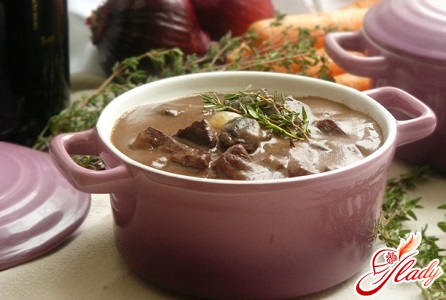
French cuisine appetizers
In France, savory dishes are often served for appetizers. Recipes for terrine, julienne, pâté, etc. are very common.
Julienne with chicken and mushrooms
Ingredients:
- Chicken breast - 500 g;
- Champignons - 300 g;
- Onion - 150 g;
- Sour cream - 300 g;
- Hard cheese - 100 g;
- Vegetable oil - 2-3 tablespoons;
- Salt to taste;
- Pepper to taste.
Cooking method:
Finely chop the mushrooms, chop the onion. Boil chicken fillet, chop. Next, fry the mushrooms and onions for 3-4 minutes, then add the chopped chicken fillet, and fry for another 2 minutes. Add sour cream to the mushrooms and chicken, mix and cook for another 2-3 minutes. Add pepper and salt to taste. Next, put everything in pots, sprinkle with grated cheese and put in the oven for 5 minutes at 170 degrees.
Chicken terrine with sun-dried tomatoes
Ingredients:
- Chicken fillet - 800 g;
- Milk - 1 tbsp.;
- Chicken egg - 2 pcs.;
- Onion - 1 pc.;
- Tomatoes - 50-80 g;
- Garlic - 3 cloves;
- Vegetable oil - 2 tsp;
- Bacon - 100 g;
- Nutmeg to taste;
- Sea salt to taste;
- Ground black pepper to taste.
Cooking method:
We remove the skin from chicken fillet, cut to your liking. Transfer to a deep bowl. We cut onion, fry in oil. We shift everything to the fillet and pour in fat milk. Using a blender, beat everything into a homogeneous mass. Add the already beaten eggs to this mass and beat everything again. Add garlic squeezed through a garlic press, nutmeg, pepper, salt to the mass. Then add sundried tomatoes and mix everything well. Cut up the bacon and lay it out in a bowl.
After that, lay out the minced chicken, level everything. Top with remaining bacon. We send it to the oven for 40 minutes at 180 degrees. After cooking, take it out and wait for it to cool completely, then put it in the refrigerator. Serve the terrine chilled.
Liver paste
Ingredients:
- Chicken liver - 400 g;
- Carrots - 150 g;
- Onion - 150 g;
- Butter - 50 g;
- Vegetable oil - 30 g;
- Garlic - 2 cloves;
- Salt and pepper to taste.
Cooking method:
Rinse the liver and cut off all the veins. Cut carrots, onion and garlic. Next, fry the liver in vegetable oil for 3-4 minutes. Add vegetables, season everything with salt and pepper. Mix everything and cook for 10-15 minutes. Transfer the liver and vegetables (with the juice that has formed) into a blender, chop everything. Transfer the pate to the mold. Melt the butter and pour it into the pate, put it in the refrigerator. Pâté is best served with crackers or bread.
Salad with pear and goat cheese
Ingredients:
- Spinach - 100 g;
- Almonds - 20 g;
- Pear - 1 pc;
- Lemon juice - 1 tsp;
- Goat cheese - 30 g.
Cooking method:
Coarsely chop the almonds. Mash the goat cheese with a fork. Slice the pear thinly. Wash and dry spinach. Put everything on a plate, add almonds, grated cheese and lemon juice.
homemade mustard
Ingredients:
- Mustard powder - 4 tablespoons;
- Sugar - 1 tsp;
- Brine - 200 ml;
- Vegetable oil - 1.5 tbsp.
Cooking method:
It is more convenient to dilute mustard with tomato pickle, as it already contains sugar, salt and spices. you will get mustard without much effort.
The brine must be filtered and heated. Add sugar and stir until completely dissolved. Next, add the mustard powder and mix everything until smooth, pour in the oil and mix again. Pour the resulting mass into a jar, tightly close the lid and leave at room temperature for 15 hours to ripen.
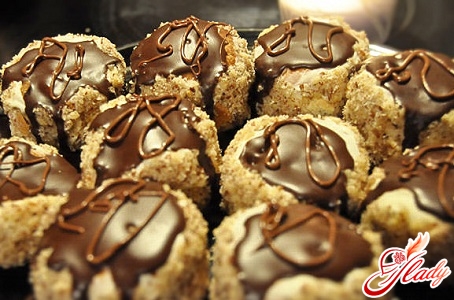
Soups and main dishes of French cuisine
You should definitely try the traditional French onion soup. They also serve meat or poultry with various side dishes as a main course, accompanied by a glass of wine. You need to beautifully set the table to truly plunge into the atmosphere of a French meal.
Onion soup
Ingredients:
- Onion - 3 pcs.;
- Dry white wine - 100 ml;
- Beef broth - 1 l;
- Garlic - 1 clove;
- Wheat flour of the highest grade - 1 tbsp;
- Hard cheese - 100 g;
- Wheat bread from flour of the first grade - 4 slices;
- Thyme - 1/2 tsp;
- Bay leaf - 3 pcs.;
- Salt and pepper to taste;
- Olive oil - 20 g;
- Sugar to taste.
Cooking method:
Cooking the onion is the most important part of this recipe. It is necessary to heat 2 tablespoons over medium heat. olive oil in a deep skillet. Next, peel the onion and cut it into lengthwise pieces. Fry the onion in a pan over high heat, stirring regularly. After 10 minutes, add a pinch of sugar, which will make the onion brown faster. Cook until the onion is caramelized (about 30 minutes).
Then you need to reduce the fire. Next, you need to peel the garlic and squeeze it into the pan, mix and fry for 1 minute. Add all the flour and mix again, frying for another 5 minutes. Then pour 1/2 tbsp. wine (dry, white) and let the mass boil for 5-8 minutes.
Add bay leaf, thyme and black pepper. After all, you need to pour the beef broth, add salt (to taste), mix everything and bring to a boil. Then cover with a lid and reduce the heat. The soup should be cooked in this state for 30-40 minutes. While the soup is cooking, prepare the toast.
Then pour the soup into a bowl and put a piece of white bread (toast). Put some cheese on and around the bread. Next, preheat the oven to 180 degrees and put the plate in for 10 minutes. As soon as the cheese is baked, you need to get a plate and serve it to the table. Bon Appetit.
Goose feet with apples
Ingredients:
- Goose - 8 pcs.;
- Apples - 4 pcs.;
- Onion - 3 pcs.;
- Apple juice - 250 g;
- Rosemary - 2 pcs.;
- White wine - 125 g;
- Olive oil - 30 g;
- Salt to taste;
- Ground red pepper to taste.
Cooking method:
You need to wash the goose leg and wipe dry. after grate coarse salt and ground red pepper. Lubricate the baking dish with oil, lay out the goose legs and simmer for 1 hour in a preheated oven at 150 degrees. While the goose is in the oven, peel the onion and cut in half. Cut the apples into rings, finely chop the rosemary. After an hour, add onions, apples, rosemary, juice and wine to the legs. Simmer for 1.5 hours. Check for readiness and serve hot. Bon Appetit.
vegetable sauté
Ingredients:
- Sweet red pepper - 100 g;
- Carrots - 100 g;
- Zucchini - 200 g;
- Onion - 100 g;
- Frozen green peas - 100 g;
- Garlic - 1-2 cloves;
- Cherry tomatoes - 100 g;
- Vegetable oil - 30 ml;
- Salt and pepper to taste.
Cooking method:
Cut the peppers and carrots into strips, and the zucchini into thin circles. Next, pour oil into a frying pan (stewpan) and heat strongly. Then add zucchini, carrots, peppers and onions, cut into half rings. Cook for 2 minutes, shaking the pan. Add green pea and cook again for 2 minutes. Add garlic, salt and pepper. Add cherry tomatoes cut into halves. Cook all 2-3 minutes. The dish is ready!
Baked omelette with zucchini
Ingredients:
- Chicken egg - 2 pcs.;
- Zucchini - 50 g;
- Onion - 20 g;
- Milk - 100 ml;
- Vegetable oil - 10 g;
- Salt and pepper to taste.
Cooking method:
Finely chop the zucchini and onion. Fry for 2-3 minutes. Beat eggs with milk, mix zucchini with eggs, salt and pepper to taste. Pour the finished mass into a mold and bake at 190 degrees for 15-20 minutes.
quiche lauren
Ingredients:
- Wheat flour of the highest grade - 180 g;
- Butter - 60 g;
- Chicken egg - 4 pcs.;
- Bacon - 150 g;
- Hard cheese - 100 g;
- Cream - 50 ml;
- Salt and pepper to taste.
Cooking method:
Sift flour, add salt. Next, add cold butter. Grind flour with butter until crumbs. Add 1 egg and 1 yolk to the mass. Knead the dough, then roll it out, put it in a mold (22-24 cm), making small sides. Finely chop the brisket or bacon. Grate the cheese. Beat 2 eggs and cream for pouring. Then pour over the filling, salt and pepper to taste. Bake for 40 minutes at 190 degrees.
French are very popular in our country. But to try them, it is not necessary to go to a restaurant. Exquisite frog legs, fragrant onion soup, delicate bechamel sauce - all this can be easily prepared at home.
Making frog legs in French (in cream sauce)
Frog legs in creamy sauce is the most famous dish not only in France but also in other countries. How exactly to cook it, we will tell right now.
So to do french dish, we need:
- frog legs - 0.5 kg;
- garlic cloves - 4 pcs.;
- shallots - about 40 g;
- high-fat cream - 700 ml;
- leek - a few feathers;
- chicken broth - about 1 liter;
- butter - about 40 g;
- salt, black pepper and other spices - use at discretion.
The process of cooking paws on the stove
Despite the apparent complexity, traditional French dishes are made easily and simply.
To prepare a gourmet dinner, the frog legs are thoroughly washed under running water, and then dried with paper napkins and their lower part is cut off. After that, take the chicken broth, bring it to a boil and add the previously processed meat.
As soon as the liquid in the pan boils again, the paws are quickly removed with a slotted spoon and left aside. In the meantime, finely chop the shallots, pour them into a frying pan with warmed butter and lightly fry. After that, garlic, grated on a small grater, is added to it, and then pre-prepared legs are laid out. 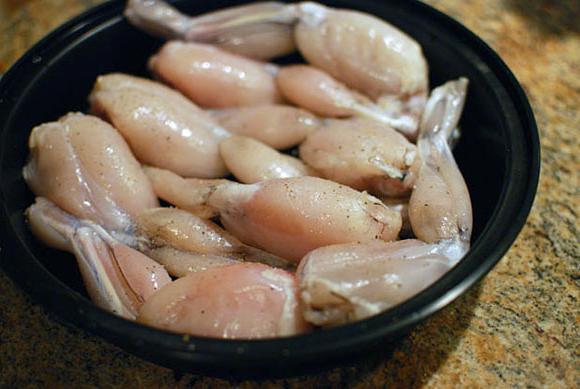
After lightly frying the frog legs, they are removed from the pan and set aside.
Cream sauce preparation process
France is divided into two main branches: refined aristocratic and regional folk. Dishes with frog legs belong to the second category.
To make delicious in the same pan where the meat was previously fried, add about 100 ml of chicken broth. Also, heavy cream is slowly poured into the saucepan and everything is brought to a boil. The ingredients are boiled down until a thick sauce is obtained.
Black pepper, salt and other spices are added to the creamy dressing at your own discretion. Finely chopped leeks are also poured into it.
How to present frog legs to the table?
Traditional French dishes are usually served with a special charm. After frying the frog legs, they are beautifully laid out on a flat plate, and then poured over with a creamy sauce. Also served with the meal fresh vegetables and greens.
Classic onion soup: step by step cooking
Onion soup is a traditional French dish that is prepared in almost all regions of this country. It can be done in different ways. However, its classic recipe is the most popular. To implement it, we need: 
- red onion - about 750 g;
- leek - about 250 g;
- dry white wine - about 250 ml;
- garlic cloves - 2 pcs.;
- vegetable oil - about 30 ml;
- butter - about 40 g;
- lavrushka - 1 leaf;
- french baguette - a couple of slices;
- Roquefort (sort of cheese) - about 90 g;
- salt and crushed pepper - use at discretion;
- chicken broth - about 2 liters.
Processing of the main components
French national dishes have always been distinguished by their simplicity and ease of preparation. And onion soup is no exception. Before welding it on the stove, all components should be processed one by one.
Red is peeled, and then finely chopped. After that, the leek is thoroughly washed and chopped into strips. They also clean the garlic cloves and crush them with a knife.
As for Roquefort, it is simply rubbed on a grater.
How to make french onion soup
French national dishes can be prepared in many ways. We decided to make onion soup on the stove. To do this, take a deep frying pan, melt it in it and then add the vegetable. After that, two types of onions (red onion and leek) are fried in a saucepan. Then garlic cloves, dry white wine, lavrushka and rich chicken broth are added to them. 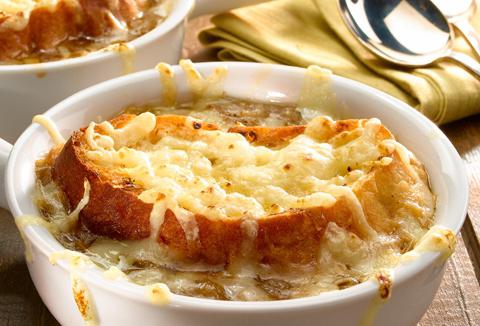
Bring the onion soup to a boil, pepper and salt to taste. Cooking this dish is recommended for 20 minutes. After that, it is removed from the stove and left under a closed lid for 5-7 minutes.
Serve a delicious French dish to the table
The national cuisine of France is distinguished by its special sophistication. To get to know her better, most people go to French restaurants. However, today we have proved that you can cook delicious aristocratic and regional dishes at home.
After the French onion soup is ready, it is poured into portioned plates. Then a couple of toasts made from a baguette are placed in each dish, after which everything is sprinkled with grated Roquefort. After that, the plates are placed in a microwave oven and heated until milk product does not melt completely. By the way, an oven can be used with the same success.
Cooking the famous French cream sauce
Bechamel is an exquisite white sauce. It can be served with a variety of meat, mushroom, vegetable and fish dishes. By the way, without this ingredient it is impossible to make traditional French lasagna.
It is believed that bechamel sauce was invented by Louis de Bechamel, chamberlain of Louis 14. However, according to another version, the author of this product is the head chef of Versailles, Francois de la Varenne. 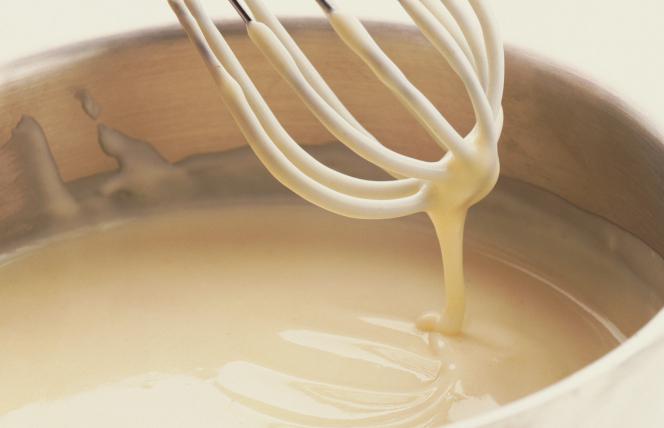
Today it is not so important who exactly should be thanked for the invention of such a popular sauce. The main thing is to learn how to cook it correctly.
Main Ingredients classic recipe sauces are wheat flour, butter and milk. By the way, these products are often used to create other sauces. In addition to them, ingredients such as chopped nuts, fried onions, cheese, various spices, herbs, and more can be added to it.
Bechamel is able to turn everyday dishes into real culinary masterpieces, giving them a unique aroma and taste. It is quite easy to prepare it. To make sure of this, we suggest following our recommendations.
So, to prepare the sauce, we need:
- butter - about 40 g;
- whole milk - about 800 ml;
- white wheat flour - about 50 g;
- ground nutmeg - about a dessert spoon;
- table salt - a pinch.
How to make french béchamel sauce
To make the famous bechamel sauce at home, you must strictly follow the requirements described below. Milk is well heated, but not brought to a boil. At the same time, melt the butter in another bowl. Then wheat flour is added to it and both components are quickly mixed without removing the container from the stove. 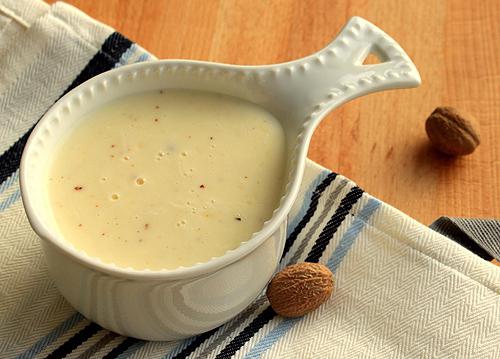
After the described steps butter and warm milk is poured into the flour in small parts. At the same time, the ingredients are thoroughly mixed, preventing lumps from forming.
After all the milk is in the pan, it is removed from the heat. If lumps are nevertheless formed in this mass, then it is recommended to rub it through a sieve. This will make the sauce more tender and tasty.
Properly prepared dressing should have a consistency like liquid sour cream.
Finally, ground nutmeg and salt to taste are added to the finished sauce.
Making a summer French drink "Lemon Twist"
As mentioned above, the national dishes of France are in great demand in our country. However, it should be noted that non-alcoholic French drinks are no less popular in Russia. How to do them at home, we will consider right now.
So, to prepare a summer drink "Lemon Twist" we need:
- apple juice natural - 100 ml;
- non-alcoholic beer Tourtel - 40 ml;
- freshly squeezed lemon juice - 20 ml;
- fresh celery - 80 g;
- boiled beets - 20 g;
- lemon slices - for decoration.
How to make a French drink "Lemon Twist"?
Preparing this drink is easy and simple. To begin with, apple juice and Tourtel non-alcoholic beer are mixed, and then lemon pomace, chopped celery and boiled beets are added to them. All ingredients are thoroughly shaken with a shaker, and then poured into a tall glass glass, which is decorated with lemon slices. 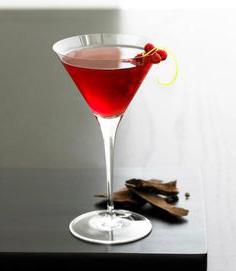
This one turns out very tasty. It quenches thirst well, and also contains few calories. Thanks to these properties, the French drink "Lemon Twist" improves well-being in the summer heat, in the heat, and also does not contribute to weight gain.
French cuisine can rightly be considered one of the most sophisticated and original culinary traditions in the world. It is highly regarded by professional culinary experts, and in 2010 UNESCO even listed French gastronomy as an "intangible cultural heritage". This style of cooking developed on the territory modern France for many centuries. If initially in France there were actually two culinary traditions - simple (peasant) and bourgeois, today these traditions are intertwined and form the basic principles of modern French cuisine.The main feature of French traditional cuisine is the use of only the freshest products. The French pay great attention to the quality and freshness of each individual ingredient. Despite the peculiarities of regional cuisines, vegetables and root crops are very popular throughout the country - eggplants, potatoes, onions, tomatoes, cabbage, greens and salads.
French cuisine and culinary tradition, like any rich one, consists of many regional ones. In the western provinces of France, people like more spicy and spicy food, Alsatian cuisine has taken a lot from German, and residents of coastal areas actively eat fish and seafood. However, there are also national dishes of France that are loved and cooked throughout the country - these are world-famous baguettes, foie gras (goose liver pate), thin crepe pancakes, bechamel sauce and creme brulee. A traditional meal in France consists of three courses: an appetizer (an introductory dish, sometimes a soup), a main course and a dessert. Extra cheese or salad can be served.
At first, the French prefer mashed soups. A traditional festive dish is a very thick bouillabaisse fish soup, popular in the Provence region. However, French cuisine does not insist on the obligatory use of soups - often local eaters manage with light snacks.
Secondly and most importantly, French cuisine offers meat or fish dishes. Almost all types of meat are used, sea and freshwater fish, and seafood. The French prefer to cook meat and fish in a few proven ways, but they never get tired of the same dishes, because they love to experiment with sauces. Sauces are perhaps the main strong point of French cuisine, because it was in this country that they were invented.
When the main course is eaten, it is customary to serve dessert on the table. Dessert can be just a cup of coffee, which the French simply adore, and a croissant, and various pastries, and creme brulee.
However, it is not so much the recipes of French cuisine that are remarkable, but the view of the French on eating in general. It is not customary to eat in a hurry here, on hastily- The French like to eat slowly, enjoying each dish and washing it all down with wonderful local wine, in which the French know a lot. It's no joke - a meal (not a feast, but eating) in France can last two or three hours. This is another reason why French cuisine is so highly regarded by experts all over the world.
French cuisine is a subject that can be talked about for a very long time. No wonder so many books have been written about her! I will try to tell in general about the French cuisine, which I certainly admire and adore.
When I first moved to France, on my first day in Paris, I went to a small restaurant next to the private school where I studied. I had plenty of time but only 80 EUR in my pocket. Of course, you won’t get a lot of money for this amount, but I decided to celebrate my first day in Paris and ordered Burgundy snails and a glass of red wine. All together cost 30 EUR. I have been waiting for them for a long time. Finally, they brought a small dish, where in each individual recess there was a snail and special tweezers for them. There were 15 of them in total.
To be honest, they smelled very appetizing, and the dish itself looked beautiful, but I had no idea how to eat them. I really wanted to just take them in my hands and pick out the contents with a fork. But people were sitting around, and I did not disgrace myself. In general, I carefully took each snail with a tweezer, afraid that now it would slip out of them, and I would get into someone's eye. Then she took out the contents and washed everything down with wine.
It was very tasty, but I was very nervous and worried all the time, so when I finished, I breathed a sigh of relief. Why am I? In addition, before you try something, try to find out how it is. And besides, some dreams are better left as dreams. These rules especially, in my opinion, apply to French cuisine.
I will first talk about a typical French dinner so that you understand what follows and what follows, since it is almost a whole ceremonial.
As for breakfast, I'm afraid to disappoint you. I read on many sites about "typical French breakfasts", but, according to my observations, the French breakfast is as unremarkable as the Russian one. And no croissants with coffee! In the morning, the French are in a hurry to work, and just like us, they don’t want to get up early in the morning. That's why they usually drink a glass of juice with toasted Nutella, or a cup of coffee with a couple of cookies. There just isn't enough time for anything else.
Dinner is the same as lunch.
french lunch
Snacks (hors d'œuvres/entrees)
So every meal starts with appetizers. In the restaurant, just in the form of appetizers, Burgundy snails fall. They can be both cold and hot. Once in a French family, we were served gazpacho as an appetizer. I didn't like it at all - cold tomato soup. An appetizer can be a light salad, just sliced vegetables or sausages. It is believed that in this way the stomach, as it were, “warms up” before the main course.
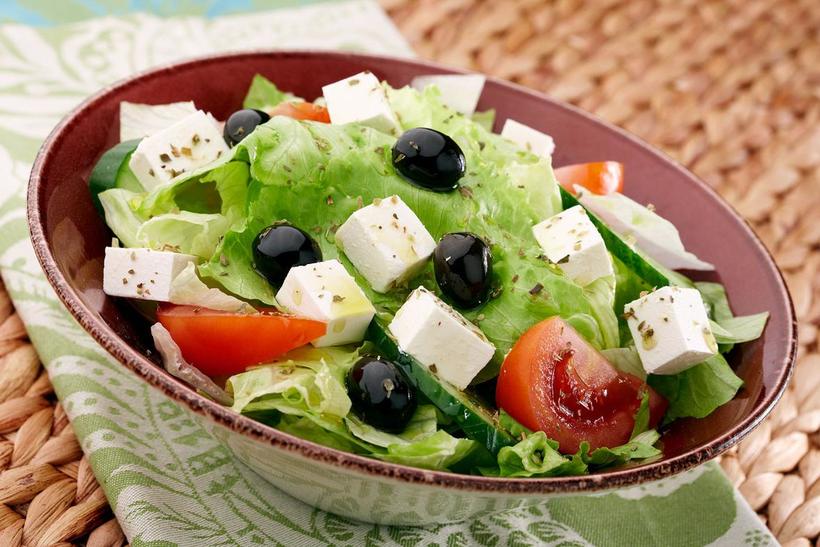
Main course
There is more space here. Much depends on the region of France in which you find yourself, on the restaurant or family where you dine. In one family, in New Aquitaine, we were served oysters in shells with a light salad as a main dish. In Paris there were fried lamb ribs, ratatouille or Fried fish. For every day there was, for example, quiche lauren - a baked, closed pie with melted cheese and slices of ham.

Cheese
They give a peculiar aftertaste after all the delicious that you have already eaten. Usually several varieties are served on a small wooden dish at once - Camembert, bleu, Roquefort, brie and many, many others. As they say, there is a different kind of cheese for every day of the year. They differ by region, by the type of milk from which they are produced, by other ingredients. I advise you to try each variety on the dish that is offered to you and determine for yourself which variety is yours.
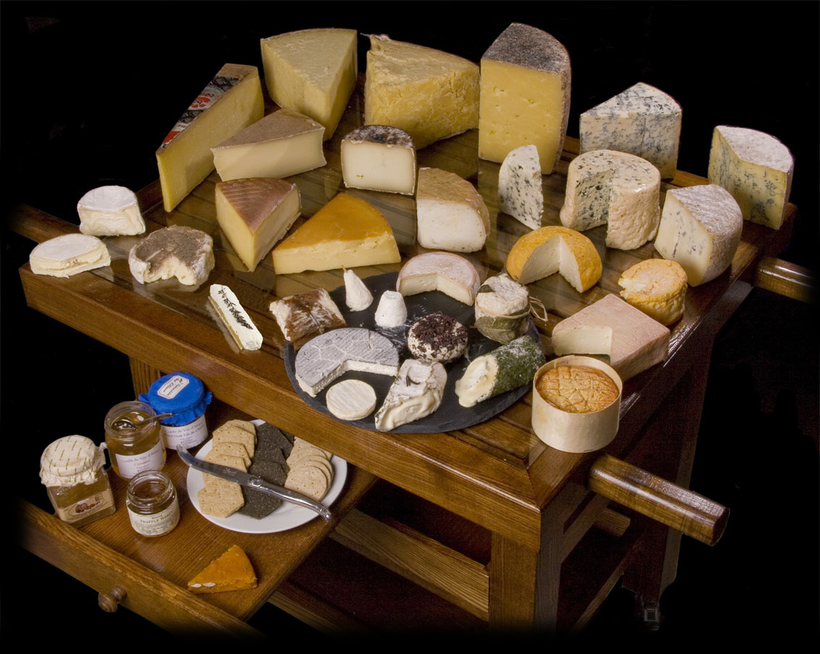
Dessert
There can be many things for dessert. And it doesn't have to be pasta. For example, once we were offered sweet and hot chocolate cake, and to it a ball of ice cream. Another time we ate just cakes. In Paris, the most typical thing is that the Parisian cake is called "opera" with an emphasis on the last syllable. It's a biscuit with chocolate syrup. Simple but tasteful. Like everything else in this beautiful country.
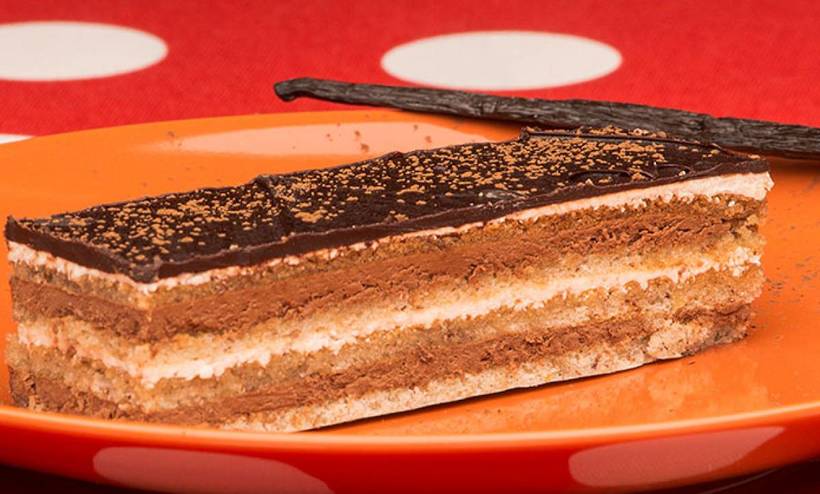
Wines and other drinks
Well, separately, of course, it is worth touching on the topic of drinks. In addition to wine, there is usually a carafe of water on the table. But different wines are served with appetizers, cheeses, main course and dessert.

As you know, white wine goes with fish and cheeses. Red - with meat and seafood. First comes an aperitif - a glass of wine. Then, during lunch, you will be replenished with your chosen wine. Red and white wine are usually served.
In addition to wine, maybe cognac is a purely French drink. Champagne is only available on special occasions.
Cuisine of France by region
Now that you know what is going on and why, let's talk about French cuisine itself. It varies greatly by region. By the way, after the territorial reform of 2014, they are already called differently. I will go from top to bottom, on the map of France.
Hauts de France
The very north of France, bordering Belgium. These are two united regions - Pas de Calais and Picardy. The cuisine of Pas de Calais has been strongly influenced by the Flemish cuisine, so here you can find so many dishes where one of the leading components .... beer! Yes, yes, there is a rabbit in beer, a rooster in beer and even soup with beer. Some dishes have direct Flemish roots, such as chicken or fish waterzoi. As for Picardy, vegetable soups flavored with herbs are popular here. A typical appetizer here is smoked eels, and duck in all forms is served as the main course.
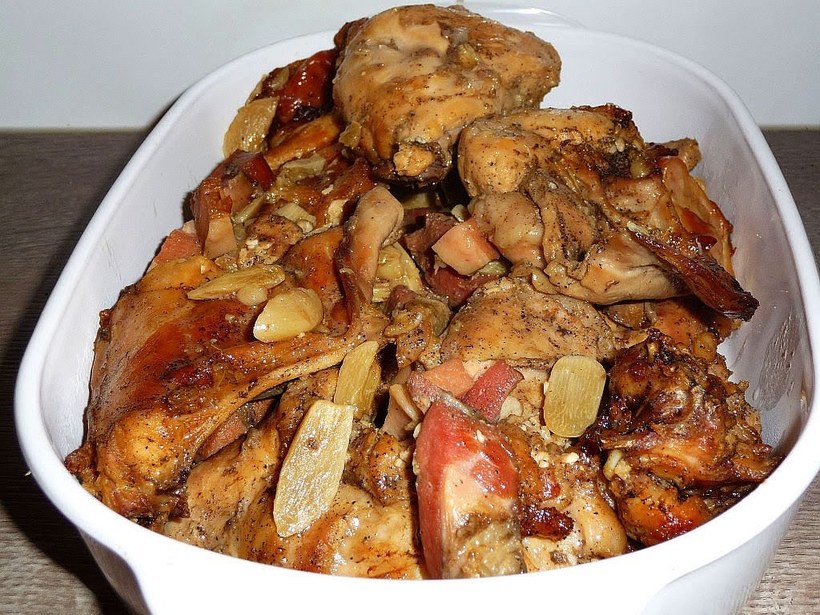
Normandy
It includes the former Upper and Lower Normandy. Normandy is Calvados, Camembert, Livaro (cow's milk cheese). Dishes made from beef are typical of this region, as well as thick sauces made from cream. Since there are many apple plantations here, accordingly, many dishes are prepared from them. Like, for example, the famous Normandy apple pie. Due to the proximity of the sea, there are many dishes prepared from fish and seafood - Normandy halibut, mussels with onion sauce etc. If we talk about drinks, then the most typical is Calvados - apple tincture.
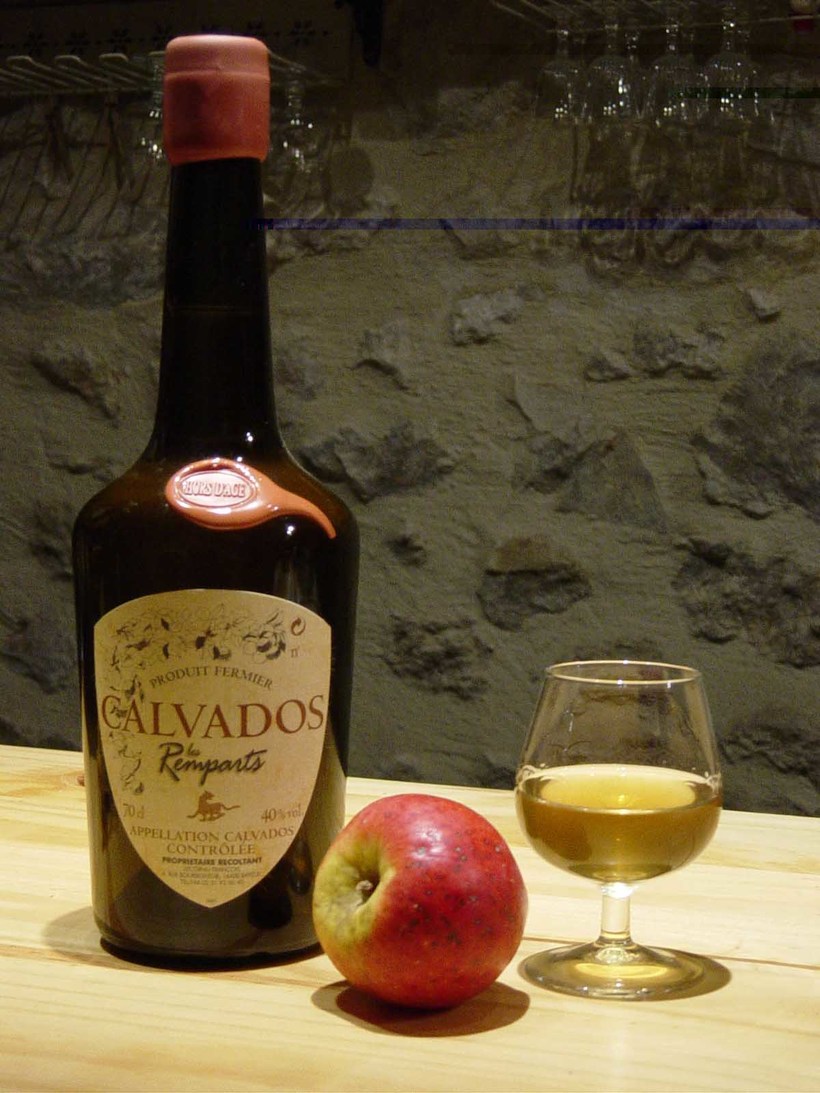
Grand Est
The cuisine of Burgundy and Franche-Comté are famous for their excellent beef, poultry, mushrooms, cheeses, and of course excellent wines. As I wrote above, Burgundy snails were the first dish I tried in Paris. There is also a rather specific dish here - “eggs in wine sauce”. In general, sauces with the addition of a red species are not uncommon here. For example, beef burgundy with onions in red wine. All red wines are made from Pinot Noir grapes, while whites are made from Chardonnay.
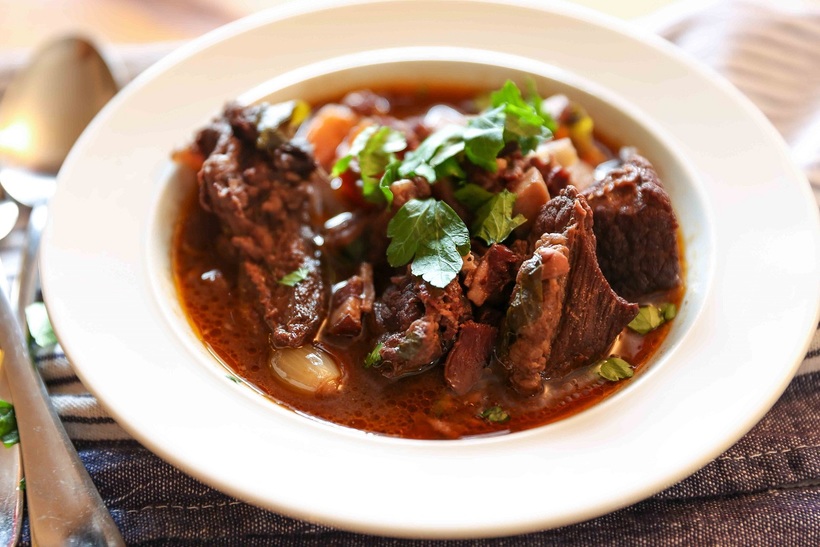
New Aquitaine
This included three regions - Aquitaine itself, Limousin and Poitou-Charentes.
First, let's talk about the gastronomy of Aquitaine and Poitou. By the way, it is here that a quarter of all wines in France are produced. In fact, it is one of the main wine regions in France. The mild, warm climate contributes to the good growth of vineyards. There is very tasty foie gras, Arcachonian oysters, wood dove stew (this is a bird from the genus of pigeons). If we touch on desserts, then how not to remember the Channel - it's something like a cupcake, but covered with caramel on top.
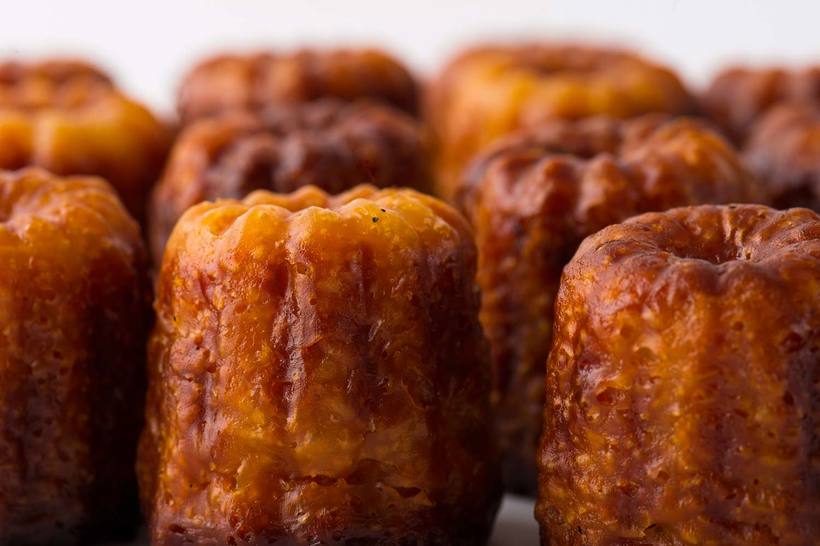
As for Limousin, chestnut dishes are popular here. The fact is that the soil here is by no means fertile, therefore, apart from chestnuts, nothing particularly grew here. Puree, soup, black pudding and even liquor are all made from chestnuts. Also popular here vegetable soups- "brezhaud", for example. Of the main dishes, stew with vegetables, potato pie, etc. can be distinguished. Desserts include a flat fruit pie called clafoutis.
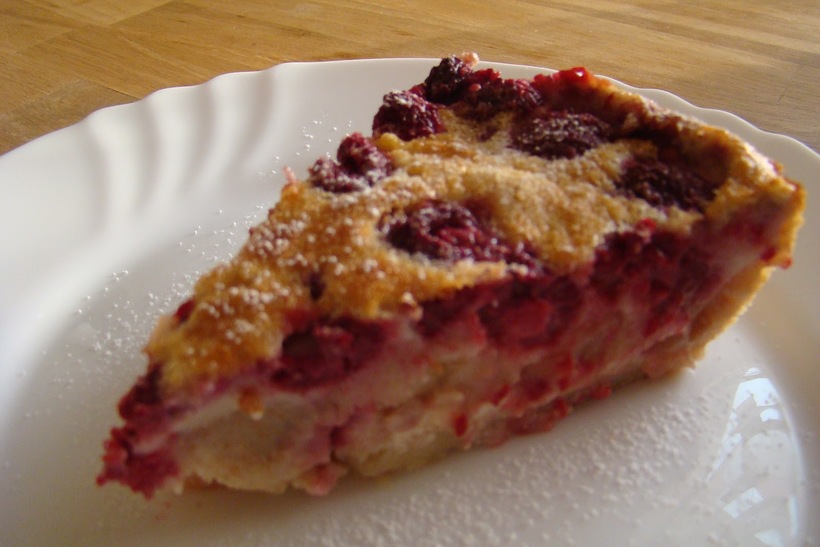
Auvergne-Rhone-Alpes
Auvergne cuisine is based on rather unpretentious ingredients - lentils, ham, cheeses and sausages. For example, there is boiled brisket with lentils or Auvergne stew. From cheese dishes - "truffade" (potatoes with cheese) and "aligo" (a simple dish made from cheese, potatoes, butter and milk). For sweets, try horns with cream or chocolate mousse. Drinks here are very pure mineral water. In general, the region is famous for its springs mineral waters.
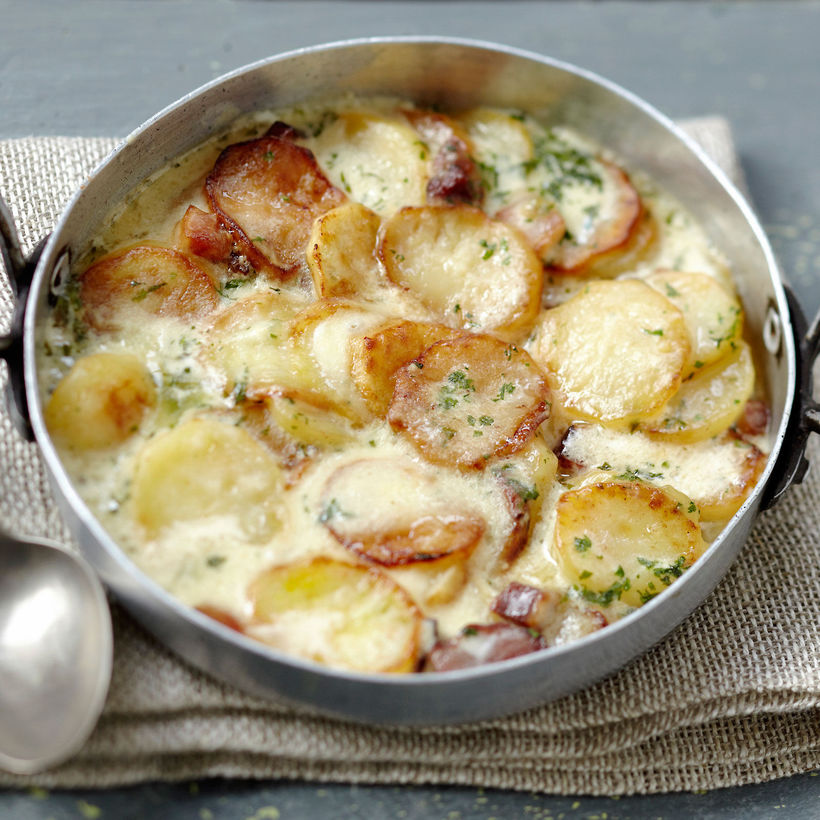
In the Rhone-Alpes region, you will be treated to delicious poultry and sausages. Trout, crayfish and frogs are caught here. Very tasty Lyon onion soup with grated cheese. But Savoyard fondue requires a whole ritual, both in preparation and in tasting. As for drinks, I advise you to try local liqueurs and aperitifs, as well as young Beaujolais wines.
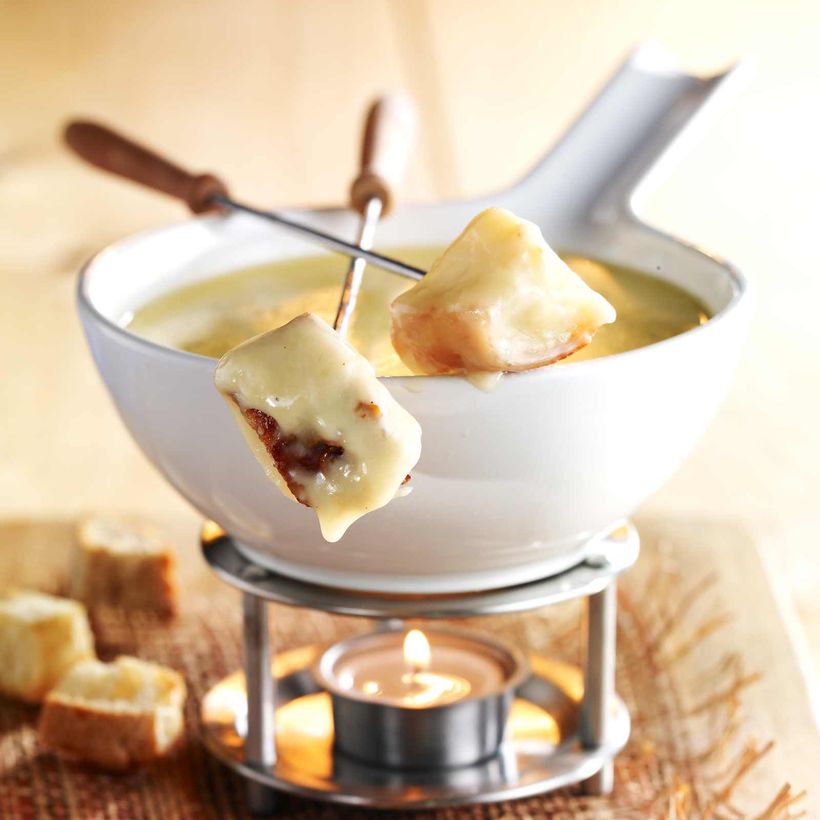
Occitania
These are the former Languedoc-Roussillon and Midi-Pyrenees. Due to the proximity to the Mediterranean Sea, fish and seafood play an important role here. For example, anchovies from Collioure, grilled mussels, snails in Catalan. Provençal cod is also very popular. From wines choose strong red and sweet wines. This is also a major wine region in France, so the variety of wines here is huge.

Provence-Alpes-Côte d'Azur
Mild, warm winters and cool summers contribute to the fact that numerous fruits and vegetables grow here. Lamb, game and fish dishes are popular. Of course, how can one not remember the famous “bouillabaisse” (soup from various varieties of fish and seafood) and grilled lamb. The oldest vineyards in France grow in the same area. The best red wines are what this area is famous for.
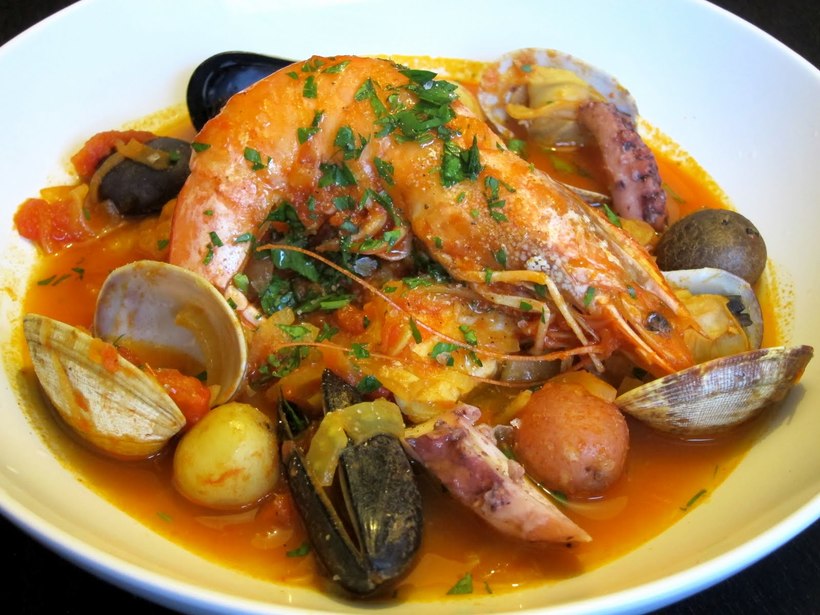
Corsica
In Corsica, dishes of wild pigs, game, seafood seasoned with local herbs are popular. The island also cooks delicious fish and seafood. Typical dishes are Corsican vegetable soup, roast goat, stuffed zucchini etc. As for the wines, they are among the worst. For my birthday, I just bought wine produced in Ajaccio. It was sour and not very pleasant in taste.

Restaurants

On the other hand, in one of the squares of Paris, we had lunch in a good restaurant, where for only 30 EUR we were brought a huge dish of mussels. He was served free bread and water. We ate heartily. We also ordered dessert. The total price tag was 40 EUR with kopecks, and I still remember that dinner.
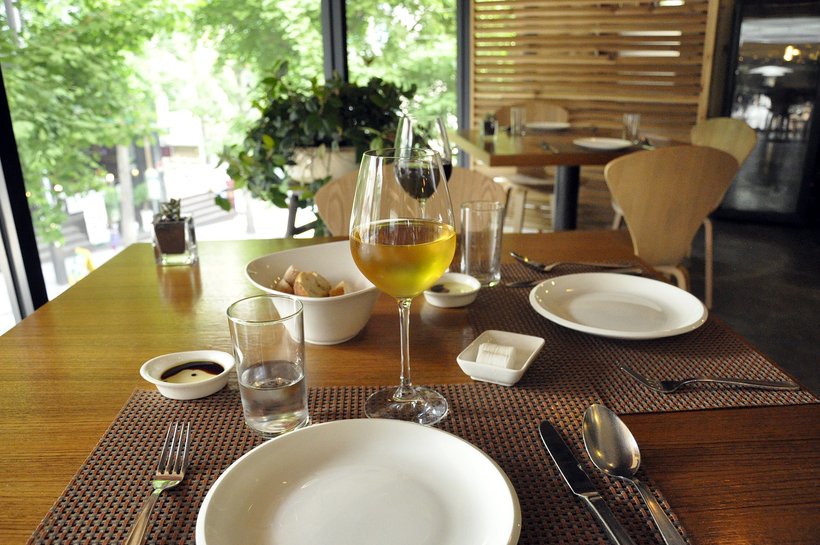
Another feature of French restaurants, especially Parisian ones, is the pompous, insolent waiters. If you think you've come to good restaurant, and you are in charge there, since you are a client, then you are deeply mistaken. The main ones are the waiters. Yes, you can complain to the manager and so on, but it’s not yet a fact that you can prove something, and the other waiter will also avenge you for his friend by spitting imperceptibly on your plate. Just be polite to them and they will reciprocate.
Supermarkets/markets/grocery stores
In France, like us, there are chains of grocery stores. Instead of "Pyaterochka" and "Magnit" there are "Carrefour", "Monoprix", "Casino". These stores will meet you at every turn, wherever you go. The prices there are quite adequate and are designed for the average consumer. I used to shop for groceries at the Casino as it was the closest to home. For a week, 30 EUR was enough for me to buy groceries.

The convenience of these grocery stores is that some of them have electronic checkouts. That is, you yourself break through all the products, and then pay for them with a card or in cash.
In addition to them, there are specialized shops that sell exclusively meat, bakery products, cheeses, etc. These are all sorts of "Boulangerie", "Crèmerie", etc. Carefully! The prices there are very high. For example, a stick of sausage - 10 EUR. A baguette costs 2 EUR, and in "Monoprix" or "Casino" stores the same baguette costs less than 1. I didn't go there, although such stores smell very nice.

There are also markets, but I did not go to any of them. Products are cheaper there, but you need to know where they go. Still, supermarkets are much more convenient. Also, one of fashion trends in France it is to buy products labeled "bio". These are the same potatoes or strawberries, but 2-3 times more expensive. There are whole shops. I didn't trust them, so I didn't buy anything there. You can write anything on the price tag, but where is the guarantee that it is actually natural product? The French family I lived with didn't buy anything there either.

Meat and semi-finished products are cheaper in specialized chain stores. For example, Picard. They sell only everything frozen: from vegetables to meat in any form. Prices - from 3 EUR. I used to buy "cordon bleu" there - this is a breaded schnitzel, inside of which there is ham with melted cheese; fish sticks and steaks. Chicken and other meats are very expensive. For example, 2 chicken legs - 20-25 EUR.

If you have come to France for a long time and like to cook for yourself, then it is best to go to supermarkets and buy there. The French do just that. If funds allow you, then it is better to buy meat and fish in specialized shops.
Summary
Finally, I will say that French cuisine is diverse and interesting and is not limited to frog legs and pasta alone. By the way, I never tried the first one. Although the French are called "paddling pools", few of them have tried this dish. The fact is that with the development of eco-movements in France, the number of restaurants preparing these dishes has sharply decreased. I could never find a place in Paris where they would cook them. Maybe you'll have more luck?














